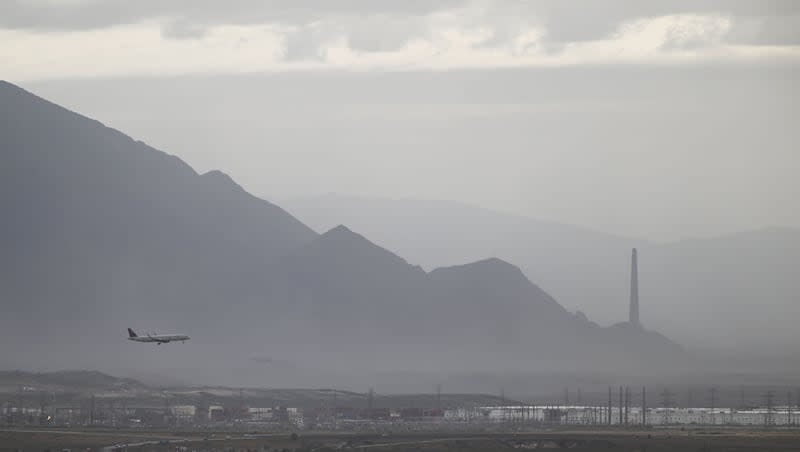How Great Salt Lake dust impacts people of color

The 800 square miles of exposed bed of the Great Salt Lake is disproportionately affecting Pacific Islanders and Hispanics, according to new research by the University of Utah.
A study published June 21 in the journal One Earth suggests that restoring the lake to a healthy water level would reduce disparities in harmful dust exposure experienced by different racial/ethnic and socioeconomic groups, along with delivering other ecological and economic benefits.
“People here in Utah are concerned about the lake for a variety of reasons — the ski industry, the brine shrimp, the migratory birds, recreation — and this study adds environmental justice and the equity implications of the drying lake to the conversation,” said lead author Sara Grineski, a professor of sociology and environmental studies.
Grineski led an interdisciplinary team of Utah faculty associated with the Wilkes Center for Climate Science and Policy.
Researchers focused on dust impacts from wind events from 2022: April 19, 20 and 21 and May 7 when spikes of recorded PM2.5 coincided with high winds.
During dust storms, current levels expose residents to 26 micrograms per cubic meter, or μg/m3, of PM2.5 on average, according to the study, significantly higher than the World Health Organization’s threshold of 15 μg/m3. Were the lake to dry up completely, exposure could rise to 32 micrograms per meter, while restoring the lake could reduce exposure to 24 micrograms per meter during these wind events, according to the study.
Derek Mallia, a research assistant professor of atmospheric sciences, developed a model for predicting exposure levels in Weber, Davis and Utah counties with the potential to affect 1.8 million people.
“We have to use weather models, since we cannot physically go out to the lake and remove/add water to see how much more/less dust it would emit,” Mallia said. “Models like the one that I developed let us run these hypothetical scenarios.”
Under the scenarios, researchers looked at impacts from a totally dry lakebed, to very low lake level, to current lake and to ‘healthy’ lake level designated as 4,200 feet above sea level. The lake’s south arm currently sits at 4,194.4 feet, almost 6 feet higher than the historic low of 4,188.7 registered at the end of 2022.
Curing what can ail everyone
According to the model, neighborhood disparities in exposure levels would increase when the lake level drops.
“We frame it the converse. Lake levels rise, overall levels of dust go down during the dust events and the gap, especially between Hispanic and Pacific Islander people, narrows with respect to the level of dust exposure for non-Hispanic white people,” Grineski said. “If we can take better care of the lake, the dust for everyone goes down and the gap in exposure between these groups goes down too.”
Due to drought and diversions, the lake has diminished to half its size, jeopardizing migratory birds, industries that rely on the lake and public health.
The lake is not only part of Utah’s cultural identity and history, but is an economic powerhouse, contributing an estimated $1.9 billion to Utah’s economy, according to the state’s website.
Over the last two legislative sessions, Utah lawmakers have dedicated nearly a billion dollars toward water conservation, with some of that attention directed to the largest saline lake in the Western Hemisphere and the eighth largest saline lake in the world.
Over time, however, the fate of the Great Salt Lake and other saline water bodies has become a question mark because they are shrinking.
The lake is snowpack dependent and while a couple of good years have helped levels rise, there is the constant battle of continued diversions, uncertainty over how future water years may play out and if time is on the side of policymakers, advocates and others hoping to reverse course.
An analysis from Utah State University outlined in the appendix of the Great Salt Lake Strategic Plan says on an average snowpack year, the lake would need an additional average of 471,000 acre-feet of water. An acre-foot is enough to cover a football field with one foot of water. In a drought year, that would rise to a million acre-feet of extra water to get it to an elevation of between 4,198 feet and 4,205 feet.

